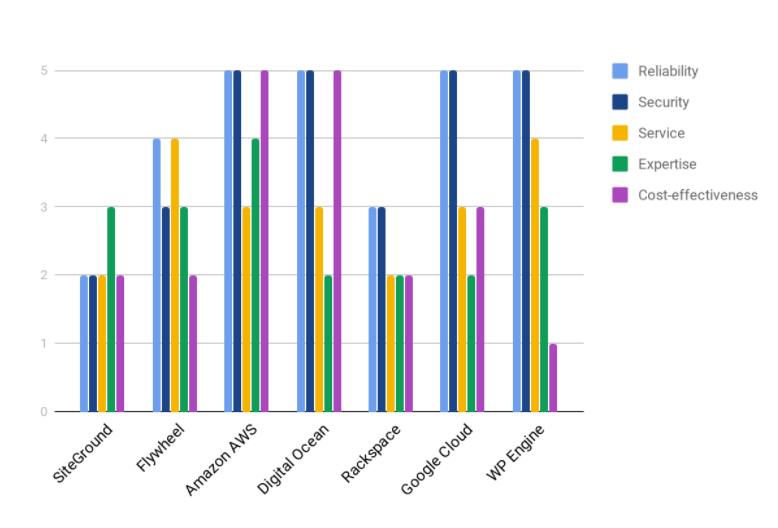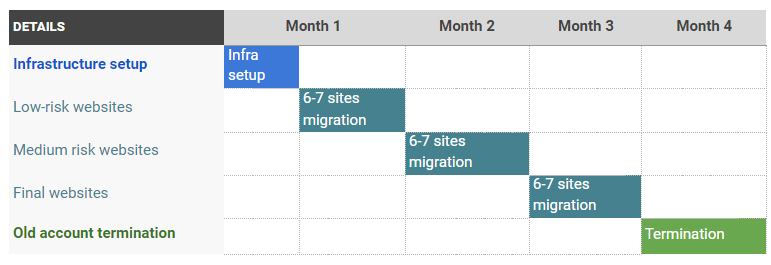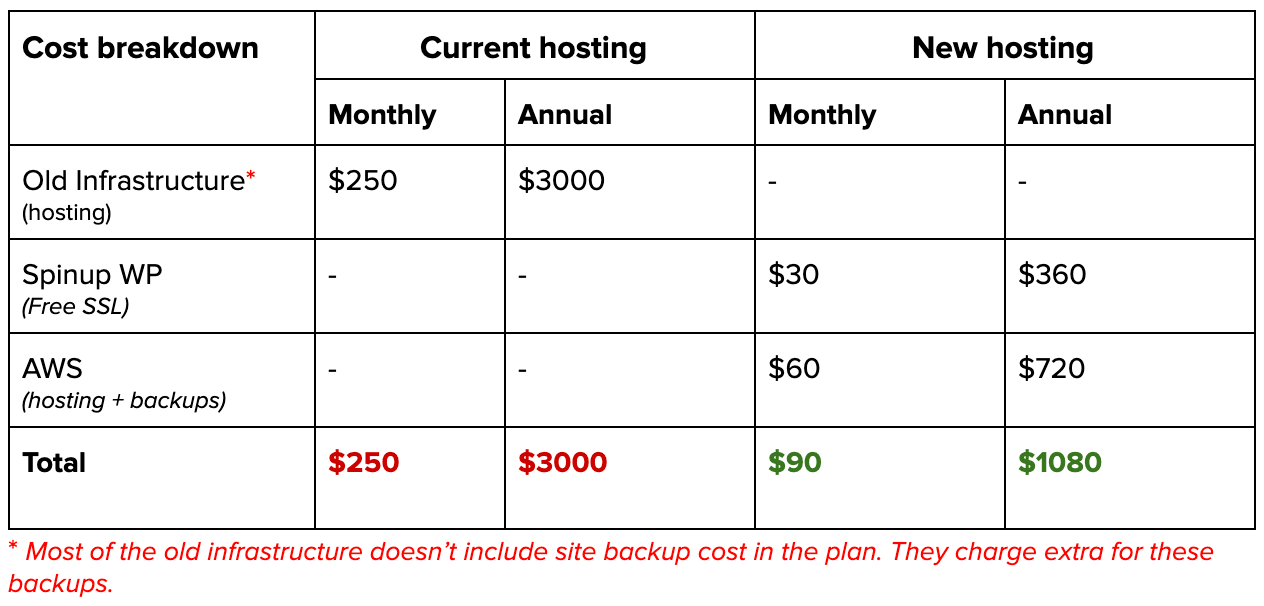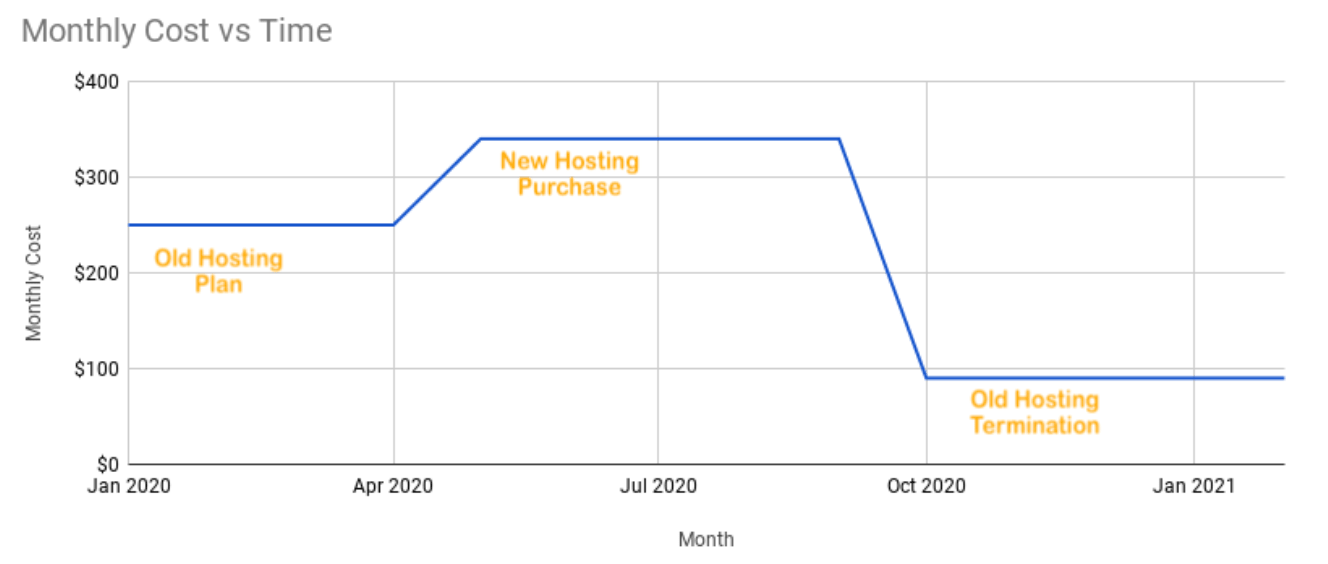My Role
Technical Lead
Project Year
2020-2021
Project Duration
6 months
Challenges Addressed
Major security breach in the marketing agency's legacy infrastructure due to an outdated server stack, fragmented hosting, security vulnerabilities, high costs, and lack of uptime monitoring—causing frequent downtime and business disruptions.
Key Outcome
Transitioned to a centralized, secure, and scalable hosting infrastructure, reducing hosting costs by 64%, improving security, uptime monitoring, and system performance, while ensuring minimal downtime and long-term business continuity.
Client Background
Atlanta based creative agency, established in 1999, specializing in branding, marketing, and web hosting services. The agency managed hosting servers for over 100 clients, including websites and admin portals, with some servers operating for over a decade. Their clientele included small businesses, e-commerce platforms, and corporate websites with high-traffic demands.
Project Overview
The agency faced a major security breach, initially appearing as a minor server issue but escalating as multiple websites went offline. Upon investigation, It discovered a malicious code was injected into the websites, compromising all customer data and displaying explicit content, severely damaging the agency’s reputation. The breach impacted over 60 sites, including small businesses, e-commerce platforms, and corporate websites.
The breach was part of a global malware outbreak affecting 320,000 websites, primarily due to a vulnerability in the InfiniteWP plugin used across all sites. Additionally, weak server security had made the attack easier to exploit.
As the Tech Lead, my primary responsibility was to contain the security breach, secure the agency’s hosting infrastructure, and implement long-term preventive measures. To ensure sustained security and stability, I developed a business continuity plan, strengthened data protection, and optimized server performance to restore trust and prevent future incidents.
Challenges: Outdated Infrastructure & Security Risks
The agency’s infrastructure had several security, operational, and cost-related challenges that made it vulnerable to attacks and inefficient to manage.
- Outdated Technology & Security Risks → Servers were running outdated PHP and MySQL versions without modern security patches, making them highly vulnerable to exploitation.
- Delayed Support & Response Time → Lack of real-time support, slow ticket resolution, and limited administrative control led to prolonged downtime during security incidents.
- Fragmented Server Management → Websites were hosted across two different platforms, SiteGround and Flywheel, both of which were compromised, making recovery and security management complex.
- High Maintenance Costs → Upgrading the legacy infrastructure was expensive, with additional costs for backups, SSL certificates, and security features, increasing overall operational expenses.
- Lack of Uptime Monitoring → There was no proactive uptime monitoring, and clients were the first to report downtime, leading to delays in identifying and addressing outages.
Solution: Transition to a Secure & Scalable infrastructure
To mitigate the impact of the breach and enhance long-term infrastructure security, a structured recovery and security enhancement strategy was proposed.
- Immediate Threat Mitigation → Isolate infected websites, remove malicious code, and conduct a comprehensive security audit to identify vulnerabilities and entry points.
- Security Hardening & Optimization → Upgrade PHP and MySQL, implement firewalls, automated security updates, and intrusion detection systems to strengthen defenses.
- Consolidated Hosting & Infrastructure → Transition websites to a centralized, more secure, and scalable environment, eliminating inefficiencies from managing multiple hosting platforms.
- Performance & Reliability Enhancements → Integrate automated website management tools, optimize server configurations, and establish cloud-based backups for stability and resilience.
- Implement Uptime Monitoring → Deploy real-time uptime monitoring tools to proactively detect downtime, enabling faster response and minimizing service disruptions.
Evaluating the Best Hosting Solution
To determine the most suitable hosting provider, multiple options were assessed based on the following key parameters:
- Reliability & Uptime → Ensuring consistent website availability and minimal downtime.
- Security & Compliance → Regular updates, patches, and proactive monitoring against vulnerabilities.
- Service & Support → Availability of expert support and managed hosting options.
- Technical Expertise Required → Evaluating ease of management, automation, and developer-friendliness.
- Cost-Effectiveness → Balancing performance, features, and affordability.
Comparison Insights
Based on the evaluation, Amazon AWS emerged as the most suitable hosting provider, offering high reliability, strong security, and cost-effectiveness compared to other options. The assessment revealed:
- Amazon AWS, Google Cloud, and WP Engine scored highest in
reliabilityandsecurity. - Amazon AWS and Digital Ocean offered the best
cost-effectiveness. - WP Engine and Flywheel provided
strong managed hosting servicesbut had higher costs. - SiteGround and Rackspace lagged in key areas, including
uptime monitoring and cost efficiency.
Supporting References for the Decision
- SpinupWP – Evaluation of Digital Ocean, AWS, and Google Cloud.
- WP Engine – Recognized for its managed hosting solutions backed by AWS infrastructure.
This evaluation supported the transition to Amazon AWS, aligning with the project’s needs for a secure, scalable, and cost-effective hosting environment.
Building a Secure & Scalable Infrastructure
A more secure, scalable, and high-performance hosting environment was established by integrating modern hosting solutions, automated management tools, and real-time monitoring systems.
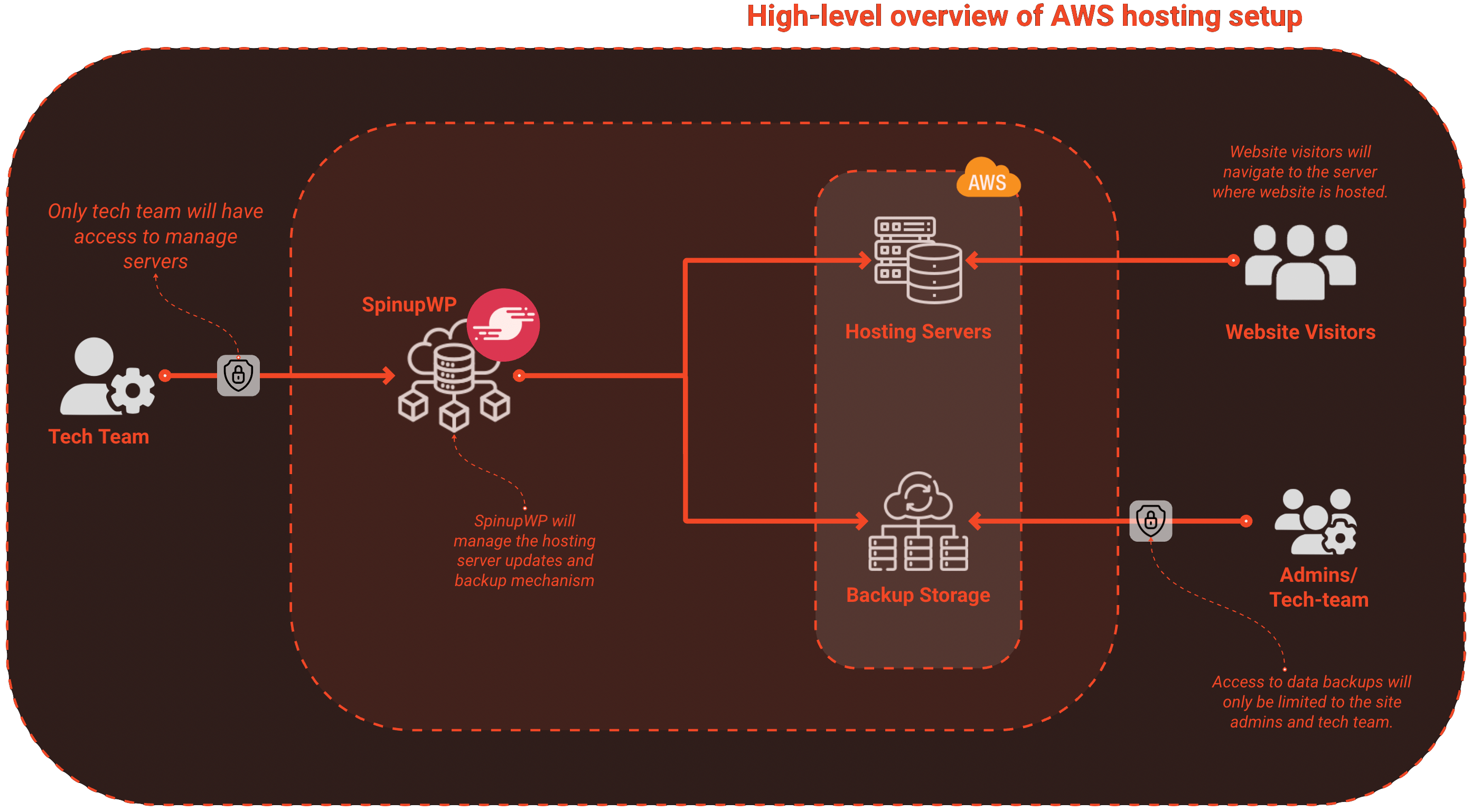
Core Infrastructure Enhancements:
- Amazon AWS Lightsail → Chosen for its scalability, high uptime (99.99%), and cost efficiency.
- SpinupWP → A modern tool for automated security updates, backups, and free SSL management.
- Uptime.io → Integrated real-time uptime monitoring for immediate issue detection and alerts.
- Centralized WordPress Plugin Management → Implemented a platform to streamline plugin updates, reducing security risks from outdated extensions.
These enhancements provided better security, automation, and proactive monitoring, ensuring minimal downtime and improved operational efficiency.
Optimized Migration Strategy
To ensure a seamless transition without disrupting business operations, a phased migration strategy was implemented:
- Prioritizing Less Critical Sites First → Migrated sites with minimal dependencies and updated frameworks to test the new hosting setup.
- Migrating Smaller Sites First → Transitioned smaller websites initially to refine the migration process and troubleshoot any potential issues.
- Migration During Off-Peak Hours → Scheduled migrations at midnight to minimize downtime and ensure smooth transitions.
By migrating 6-7 sites per month, the entire process successfully completed within four months.
Cost Comparison
By transitioning to the new secure infrastructure, we significantly reduced hosting expenses while enhancing security, automation, and performance. Below is a detailed cost breakdown, showcasing the savings achieved through AWS Lightsail and SpinupWP.
The below graph represents the cost graph after and before the migration.
Post-Migration Workflow
With the new secure infrastructure in place, a streamlined process was established to efficiently manage websites:
- Configured domain settings for seamless website routing.
- Automated deployments using SpinupWP, reducing manual effort.
- Enabled SSL certificates to enhance security and improve SEO ranking.
- Implemented advanced caching mechanisms to optimize website performance and load times.
This automated and optimized workflow improved performance, security, and reliability, ensuring long-term cost savings after the initial infrastructure investment.
Key Achievements
By optimizing the hosting infrastructure, the following key improvements were achieved:
- 64% reduction in hosting costs, significantly lowering long-term operational expenses.
- Enhanced security measures, including proactive monitoring, automated updates, and improved uptime management.
- Seamless business continuity, with all sites migrated in a structured phase within four months, minimizing disruptions.
- Greater client trust and reliability, as websites now operate on a secure and scalable infrastructure.
- Accelerated return on investment, with clients benefiting from enhanced security and performance after a one-time infrastructure upgrade and service investment.
Role & Impact
As the Tech Lead, spearheaded the transition to a secure, scalable, and cost-effective hosting infrastructure, ensuring minimal downtime, enhanced security, and improved operational efficiency. Collaborated with stakeholders, technical teams, and hosting providers to design and implement a future-ready infrastructure for the agency.
Key Skills Demonstrated
- Infrastructure Security & Optimization (Firewalls, Automated Security Updates, Proactive Monitoring)
- Cloud Infrastructure Management (Hosting Migration, Server Optimization, Resource Allocation)
- Cost Optimization & Performance Engineering (64% Cost Reduction, Uptime Improvement, Load Handling)
- Incident Response & Crisis Management (Recovery of 60+ Websites, Security Mitigation Strategy)
- Server & Application Performance Tuning (PHP & MySQL Upgrades, Caching Mechanisms, Faster Response Times)
- Process & Workflow Automation (SpinupWP Deployment, Reduced Manual Effort, Improved Efficiency)
- Scalability & Disaster Recovery (Cloud-Based Backups, Uptime Monitoring, Real-Time Threat Detection)
- Stakeholder Communication & Project Leadership (Client Coordination, Technical Alignment, Hosting Strategy)
- Risk Mitigation & Business Continuity Planning (Structured Migration Plan, Minimal Disruptions, Long-Term Stability)
This project reinforced the importance of security-first infrastructure design, proactive monitoring, and cost-efficient cloud solutions in ensuring long-term digital asset protection and business scalability.
